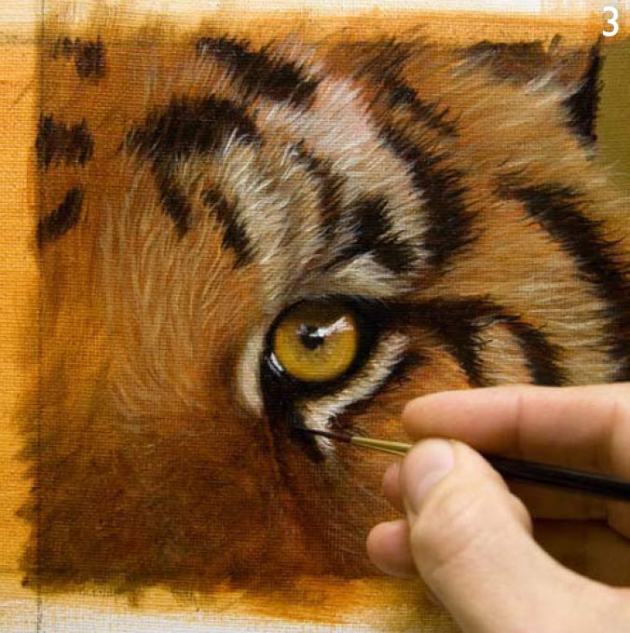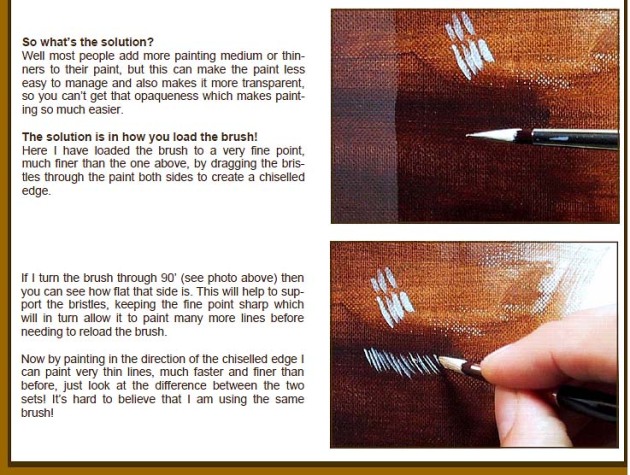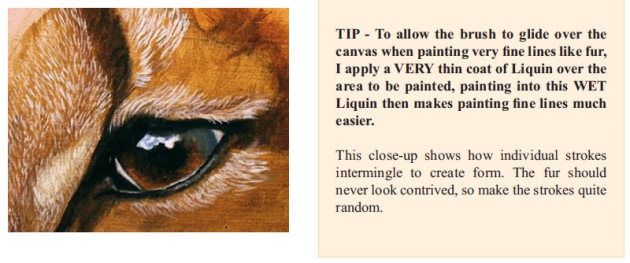UPDATE 13th May 2013
As promised I have listened to your opinions and just completed my brand new eBook packed full of ADVANCED fur painting techniques and tutorials. The eBook is called “How to Paint Animals” and is available right now for instant download and also on a computer CD (for a limited time only)
Full details are on my wildlife art tutorial site or click the photo below 🙂

advanced techniques painting fur
From the Poll it appears that most of you would like to see more fur tutorials and tips, so here is an excerpt from an article I wrote in Artists & Illustrators magazine, if you didn’t see the article in the mag hopefully you will find this of use 🙂
It might appear that I painstakingly brush in each individual hair. But that type of painting can become very tedious, so I concentrate on just giving the impression of detail such as fur and hair.
I use fast-drying Winsor & Newton Alkyd Oil paints – which consist of pigment in oil modified alkyd resin – so there is minimum waiting time between drying stages. Whether you paint tigers, gorillas or poodles, the following stages will help you depict realistic fur…
Image number 2) This is the blocking-in stage. Paint the colour and tone deep down in the fur, the area you can see between all the surface hairs – it’s frequently a dark brown or grey. At this stage, don’t worry about details. Your aim should be to give the animal a solid structure. The details will come soon enough, and you will need something quite dark underneath them.

Image Number 3) This is really a mid-texture stage.
Remember: fur is made up of not just hair but also air. There is usually depth to it, so try to imagine what it would feel like as you paint it. This stage helps to create the appearance of depth and thickness to the fur – I frequently do it while Stage 2 is still wet. Use quite loose brushstrokes, especially when painting long fur, and try to detach yourself from thinking about where each stroke is going to go as you paint. If you think about it too much it can look regimented and unrealistic. Always paint in the direction of the fur’s growth.

Image number 4) Complete this stage after Stage 3 has fully dried (essential if you are going to glaze). Begin by knocking Stage 3 back with a fairly dark glaze (a thin wash of colour). This then automatically becomes mid-depth fur. Then, when it is still wet, add the final details using a rigger brush. It’s surprising how few details need to be applied over the other layers to give the illusion of fur.

Image number 5) Refine the fur, glazing where necessary and adding a touch more detail here and there – in the case of this tiger, whiskers and the white hairs on the surface of the coat.

Hope you liked it and don’t forget to leave your comments 🙂
This Tututial is also in my brand new ebook with even more text.

Learn to paint site
online gallery
You can download 2 FREE pages right now – PDF files































